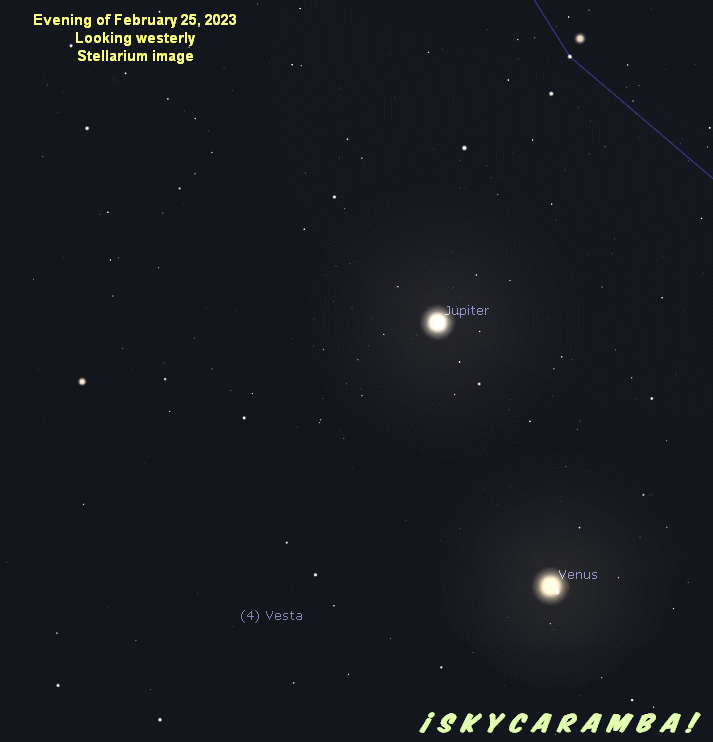
The month starts with a close paring of Venus and Jupiter. Look west as darkness begins. With binoculars you may spot Vesta nearby. In a telescope, Venus is gibbous and Jupiter has little companions called the Galilean moons because Galileo was the first to see them. Venus traverses Pisces the rest of the month, climbing above Jupiter while Jupiter and the constellation head sunward and set earlier each evening.
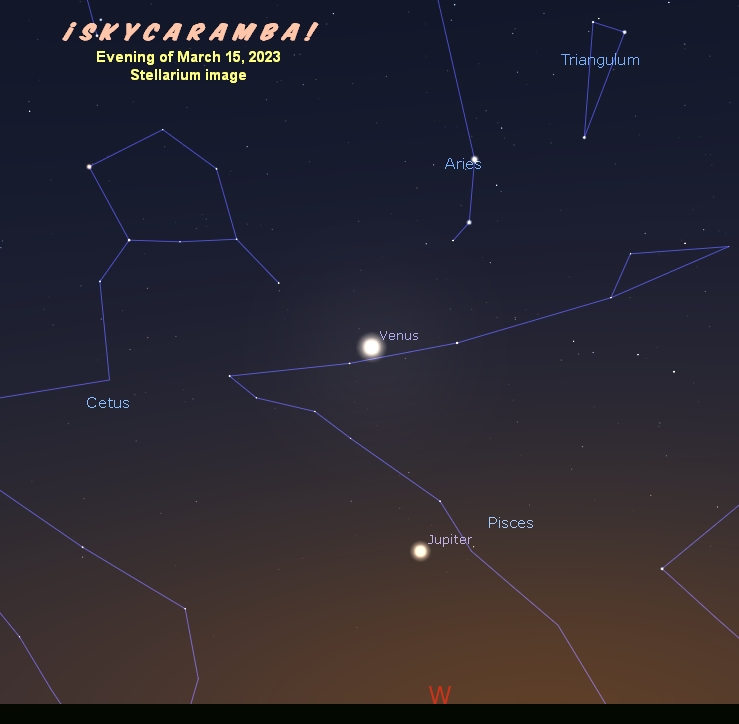

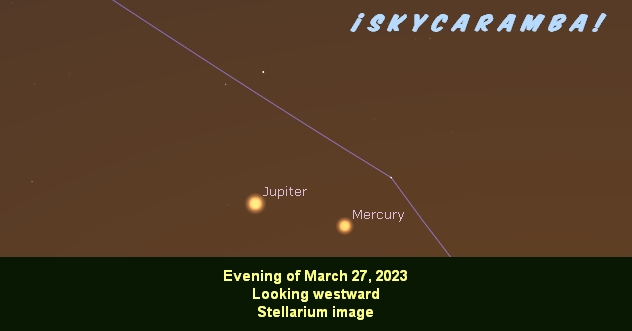
Jupiter becomes hard to see in the last days of March. It sets soon after the sun. A thin crescent moon passes Jupiter on the 22nd. The crescent thickens and passes Venus on the 23rd and 24th. Mercury, emerging into the evening, appears close to Jupiter on the 27th and 28th. They’ll be 1.3° apart. The view will be challenging anywhere on Earth. The pair are close to the horizon when darkness begins. In a telescope, Mercury will appear gibbous. Mercury is slightly easier to see by the 31st. The messenger planet is at perihelion on the 31st.
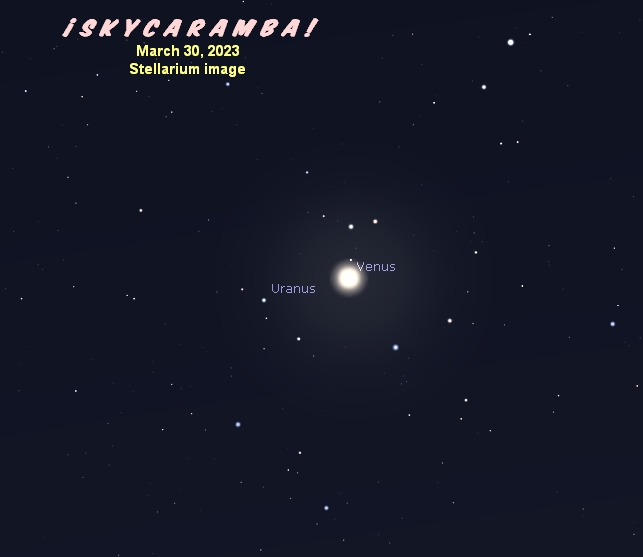
Venus’s journey takes it near Uranus on the 30th. Binoculars will reveal them 1.2° apart.

Mars begins March ready to pass by Elnath in Auriga as a gibbous moon is entering Gemini ahead of it. The red planet passes Elnath around the 10th. It’s near the feet of Gemini around the 26th. It’s passed by a first quarter moon on the 27th and 28th. Mars remains a good evening object all month.

The waxing gibbous moon is close to Pollux on the 2nd. It’s near Regulus on the 5th. Full moon is on the 7th. The moon passes Spica on the 10th. The moon’s approaching last quarter when it passes Antares on the 14th. Last quarter is the next day. A waning crescent passes Saturn on the 19th. The ringed planet is in Aquarius and emerging into the morning after conjunction last month. New moon is on the 21st.

Lunar phases this month: full on the 7th, last quarter on the 15th, new on the 21st, first quarter on the 29th.
The moon is at apogee at the 3rd at 405,900 km distance. It’s at perigee on the 19th at 362,600 km away. A second apogree happens on the 31st at 405,000 km.
Northern lunistice is on the 1st at 27.7° from the equator. The moon crosses the equator on the 9th, reaches southern lunistice on the 15th at 27.8° from the equator, and crosses the equator again on the 22nd. The moon reaches northern lunistice again on the 28th at 27.9°.
The earth is at equinox on the 20th at 21:25 UT.
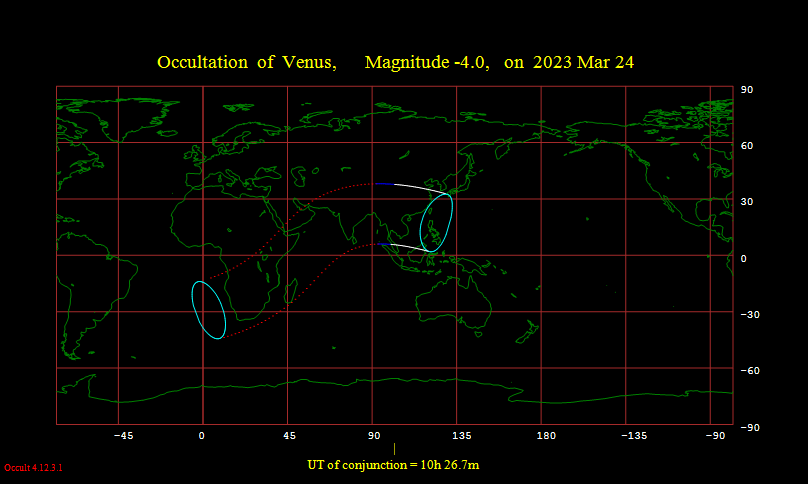
The moon passes in front of Venus on the 24th. It’s a daytime event southern Africa and much of southern Asia. Since Venus is visible in the daytime if you know exactly where to look, viewers in those areas may see a white dot disappear from and reappear in a blue sky. A telescope or binoculars will help. Be careful to keep the instrument from pointing at the sun. Southeastern Asia viewers will see the occultation in the evening.
